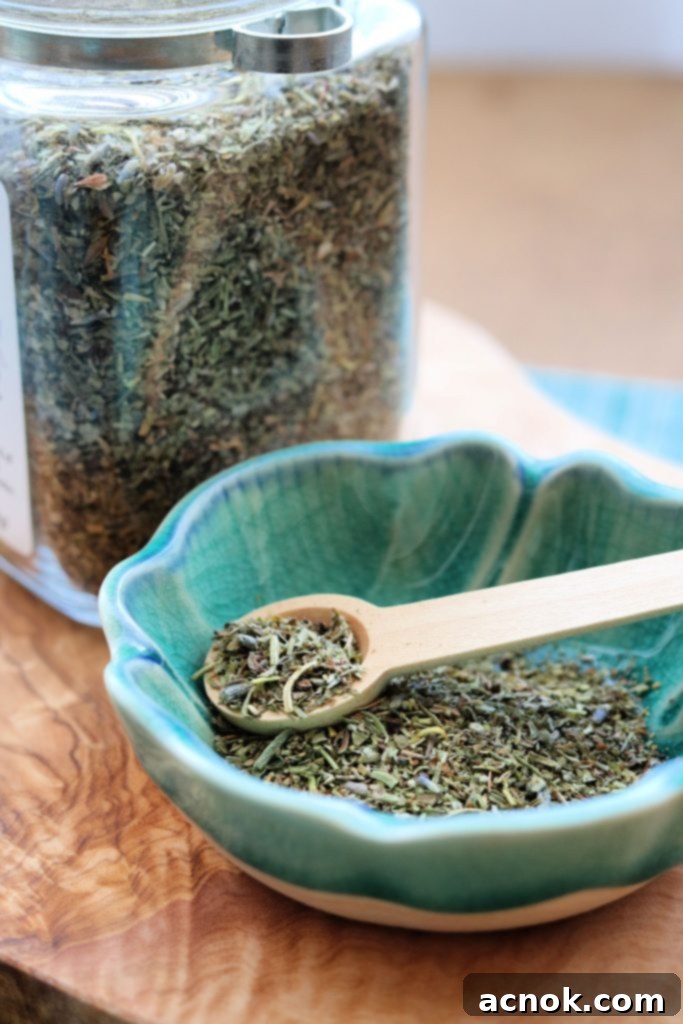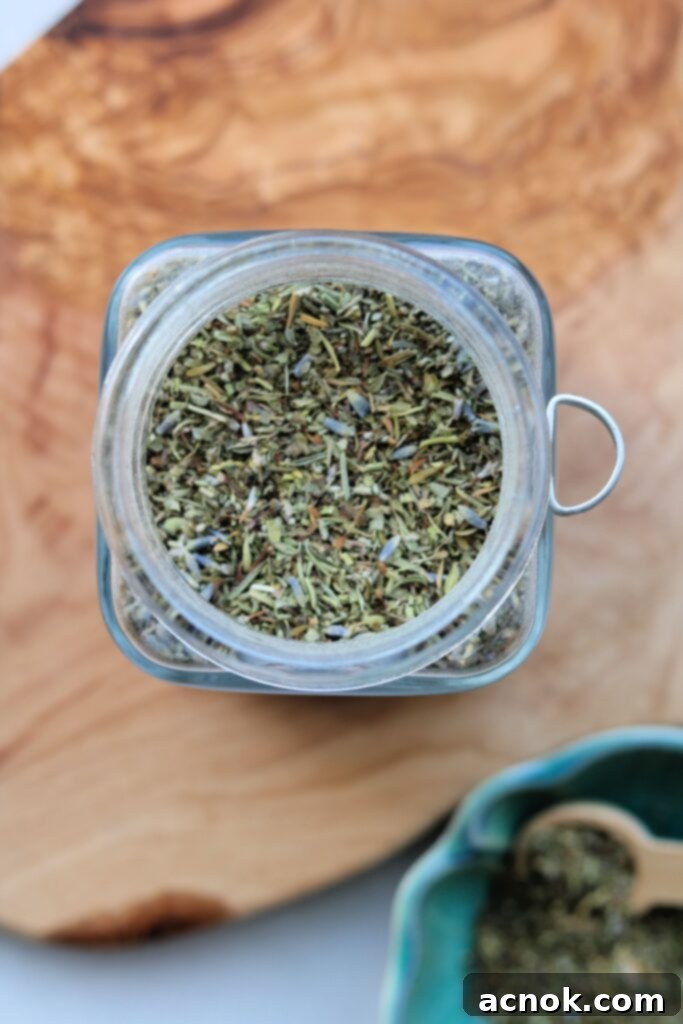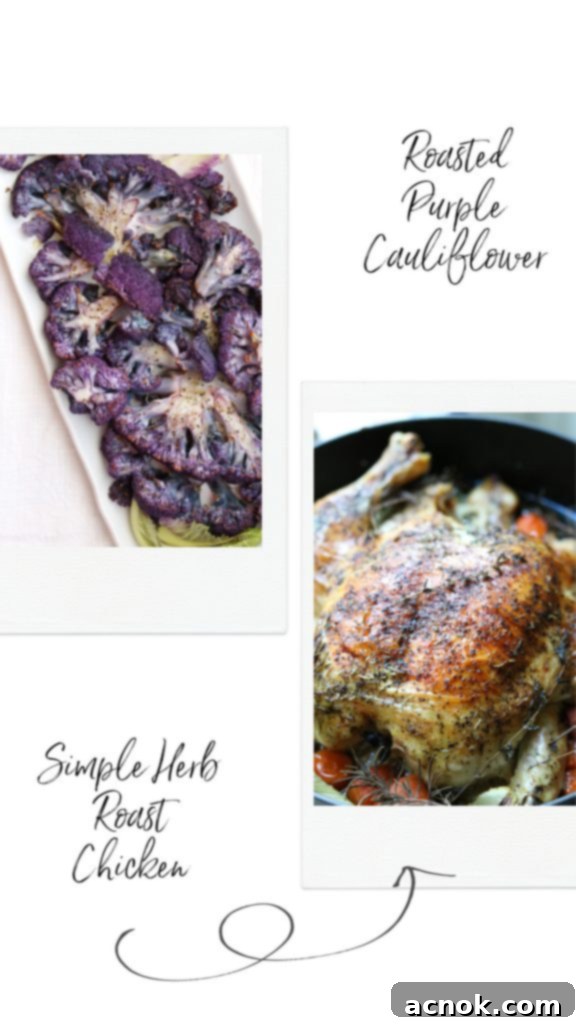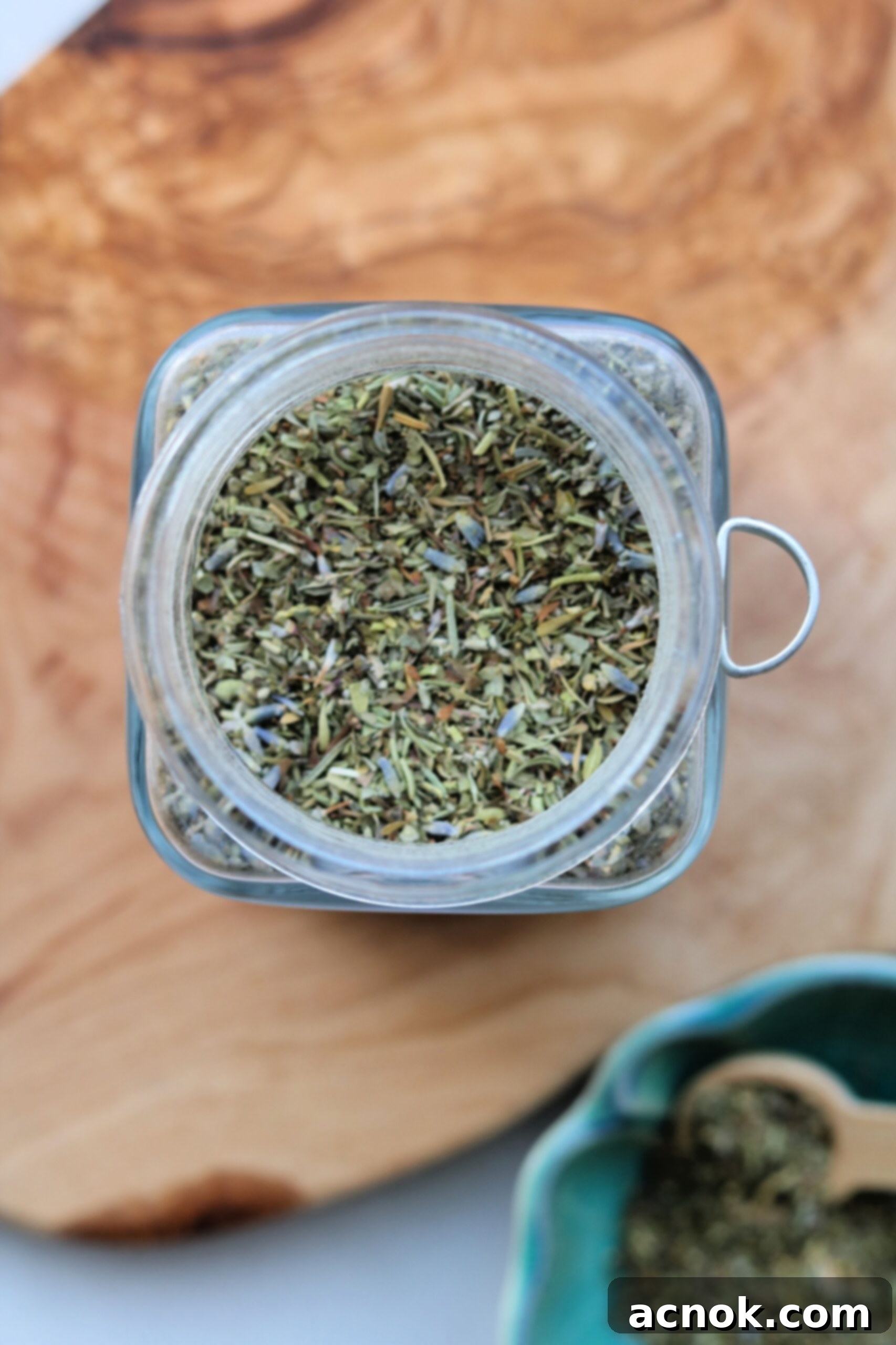Herbes de Provence: The Ultimate Guide to This Aromatic French Herb Blend
The mere mention of Herbes de Provence evokes a sense of sun-drenched landscapes, blooming fields, and the simple, yet profound, flavors of the South of France. For many, it’s the taste of Spring, inspiring a craving for unpretentious, deeply satisfying meals. Imagine a perfectly seasoned Simple Roast Chicken, tender roasted vegetables, a fresh lentil salad, or crisp green beans – all elevated by this enchanting blend. It’s a staple that can transform everyday ingredients into something extraordinary, bringing the warmth and essence of Mediterranean cooking right into your kitchen.
While countless variations exist, many home cooks, like myself, find excellent quality right on the shelves of local markets. For instance, the popular Trader Joe’s version, which I often reach for, beautifully captures the spirit of this blend. It typically includes Thyme, Marjoram, Savory, Rosemary, Basil, Sage, and often, a delicate touch of Lavender. Other interpretations might feature Bay Leaf or even Fennel, but for me, that subtle hint of Lavender is what truly sets it apart, adding a unique floral note that is both surprising and delightful.

What Exactly is Herbes de Provence?
At its heart, Herbes de Provence is an aromatic dried herb blend that hails from the Provence region in southeastern France. This area is renowned for its sun-drenched climate, rugged hills, and the wild herbs that flourish there. The blend isn’t a single, fixed recipe; rather, it’s a collection of herbs traditionally grown in the region. While wild herbs have been used in French cooking for centuries, the specific commercial blend known as “Herbes de Provence” became popularized in the mid-20th century to offer a convenient way for cooks worldwide to recreate the distinct flavors of this beloved region.
The Core Components of Authentic Herbes de Provence
Though variations abound, the following herbs are almost always found in a classic Herbes de Provence mix, each contributing its unique character:
- Thyme: Earthy, minty, and slightly lemony, thyme is the backbone of many Mediterranean dishes. It provides a savory depth that grounds the other aromas.
- Marjoram: Sweet, delicate, and subtly floral, marjoram softens the more pungent herbs, adding a gentle warmth.
- Savory: Both summer and winter savory offer a peppery, slightly bitter, and robust flavor. It’s especially good with beans and meats.
- Rosemary: Pungent, piney, and resinous, rosemary adds a powerful, aromatic kick that pairs exceptionally well with roasted meats and potatoes.
- Basil: Sweet, peppery, and incredibly aromatic, basil introduces a touch of freshness and sweetness, reminiscent of summer gardens.
- Sage: Earthy, slightly bitter, and wonderfully aromatic, sage brings a robust, warming note that complements poultry and rich dishes.
- Lavender: This is the most distinctive and sometimes polarizing addition. When used sparingly, culinary lavender adds a delicate, floral, and slightly sweet aroma that truly transports you to the lavender fields of Provence. It should be used with a light hand to avoid overwhelming other flavors.
- Bay Leaf: Some blends include dried bay leaf, which contributes a mild, slightly bitter, and herbal note that enhances savory dishes.
Unlocking Culinary Potential: More Than Just Roast Chicken
If you’re new to this herb blend, its complexity might seem a little intimidating at first glance. However, once you begin to experiment, you’ll quickly discover its incredible versatility and find yourself reaching for it far more often than not. It’s not just for French classics; Herbes de Provence is a secret weapon that can elevate a vast array of dishes.

My Top 3 Go-To Applications for Herbes de Provence:
While the possibilities are truly endless, here are three fantastic ways to start incorporating this brilliant blend into your cooking, showcasing its ability to shine in diverse culinary settings:
- Roasted Purple Cauliflower: Roasting brings out the natural sweetness of cauliflower, and Herbes de Provence enhances this beautifully. Toss florets with olive oil and a generous sprinkle of the herb blend before roasting until tender and slightly caramelized. The earthy, aromatic notes complement the vegetable’s flavor profile, turning a simple side dish into something truly special. It’s a vibrant, healthy, and incredibly flavorful preparation.
- Simple Roast Chicken: This is perhaps the most classic and satisfying use. Rubbing a whole chicken, or even just chicken pieces, with olive oil and Herbes de Provence before roasting creates an unbelievably fragrant and flavorful meal. The herbs infuse into the skin, creating a delicious, aromatic crust, and permeate the meat, ensuring every bite is succulent and perfectly seasoned. It’s a testament to how simple ingredients can yield profound flavors.
- Puff Pastry with Pears, Gorgonzola, and Walnuts: This surprising combination demonstrates Herbes de Provence’s versatility beyond savory meats and vegetables. The herb blend adds an unexpected layer of complexity to this sweet and savory tart. The earthy, floral notes balance the richness of the Gorgonzola, the sweetness of the pears, and the nuttiness of the walnuts, creating an appetizer or light meal that is sophisticated and deeply satisfying. It’s a bold choice that truly pays off, showcasing the blend’s ability to transcend traditional boundaries.
Expanding Your Culinary Horizons: Endless Ideas for Herbes de Provence
The beauty of Herbes de Provence lies in its incredible adaptability. Its balanced flavor profile means it can be incorporated into almost any savory dish, adding depth, warmth, and that unmistakable touch of French elegance. Beyond the classics, consider these brilliant and fresh ways to use this herb blend:
Versatile Applications in Your Daily Cooking:
- Potatoes: Whether baked, fried, roasted, or mashed, a sprinkle of Herbes de Provence transforms potatoes into a flavorful side dish. Imagine crispy roasted potatoes infused with rosemary and thyme!
- Eggs: Elevate your breakfast or brunch! Add it to scrambled eggs, omelets, frittatas, or quiches for an aromatic boost. It pairs wonderfully with the richness of eggs.
- Soups and Stews: Infuse your broths and hearty stews with the essence of Provence. It’s a personal favorite in chicken soup, adding a comforting, complex flavor that is both familiar and exotic.
- Avocado Toast: For a sophisticated twist on a trendy favorite, mash avocado with a pinch of Herbes de Provence, a dash of lemon juice, and a sprinkle of flaky sea salt. It adds an unexpected layer of herbaceous goodness.
- Any Roasted Vegetable: From zucchini and bell peppers to carrots, asparagus, and tomatoes, Herbes de Provence is a perfect companion for virtually any roasted vegetable. It enhances their natural sweetness and adds an inviting aroma.
- Hummus: Stir a teaspoon into your homemade or store-bought hummus for a Mediterranean-inspired dip that’s bursting with flavor. Serve with warm pita bread and a drizzle of olive oil.
- Grilled Meats and Fish: Use it as a dry rub for chicken, lamb, pork, or even hearty fish like salmon before grilling. The herbs create a beautiful crust and permeate the meat with their exquisite aroma.
- Salad Dressings and Marinades: Whisk Herbes de Provence into olive oil and vinegar for a vibrant vinaigrette, or combine with lemon juice and garlic for a quick marinade that tenderizes and flavors.
- Focaccia and Breads: Sprinkle generously over homemade focaccia bread before baking, or knead it into rustic bread doughs for an aromatic treat.
- Cheeses: Combine with olive oil and fresh goat cheese for a delightful spread, or sprinkle over a soft brie before baking.

Tips for Maximizing Your Herbes de Provence Experience
To truly get the most out of this versatile herb blend, consider these simple tips:
- Storage: Like all dried herbs, store Herbes de Provence in an airtight container in a cool, dark place away from direct sunlight and heat. This will preserve its potent aroma and flavor for as long as possible.
- When to Add: Because it’s a dried blend, Herbes de Provence benefits from a bit of cooking time to release its full aromatic potential. Add it early in the cooking process, such as when sautéing vegetables, marinating meats, or at the beginning of a soup or stew.
- Start Small, Adjust to Taste: While it’s hard to overdo it, especially if you love robust flavors, if you’re new to the blend, start with a teaspoon or two for a dish serving four people and adjust according to your preference. The lavender, in particular, can be strong if used in excess.
- Make Your Own Blend: If you have access to fresh herbs, or if you prefer a specific ratio, you can easily create your own Herbes de Provence blend. Simply dry your favorite herbs (thyme, rosemary, marjoram, savory, basil, sage, and a tiny bit of lavender if desired) and combine them. This allows for customization and ensures maximum freshness.
- Infuse Oils: Create a fragrant Herbes de Provence-infused olive oil by gently heating the herbs in olive oil, then letting it cool and steep for a few days. This makes a wonderful finishing oil for salads, grilled foods, or dipping bread.
Conclusion: Embrace the Essence of Provence
Herbes de Provence is far more than just a mix of dried leaves; it’s a journey for your senses, a shortcut to adding depth and soul to countless dishes. From the simplicity of a perfectly seasoned roast chicken to the surprising elegance it brings to a sweet-savory tart, its versatility knows no bounds. This quintessential French herb blend truly makes simple, delicious food crave-worthy.
So, whether you’re a seasoned chef or a home cook just beginning to explore global flavors, don’t hesitate to make Herbes de Provence a staple in your pantry. Let its aromatic embrace transport you to the sun-drenched hillsides of Provence and inspire endless culinary creativity in your own kitchen. It’s an indispensable ingredient that promises to transform your meals from ordinary to extraordinary, one fragrant sprinkle at a time.
